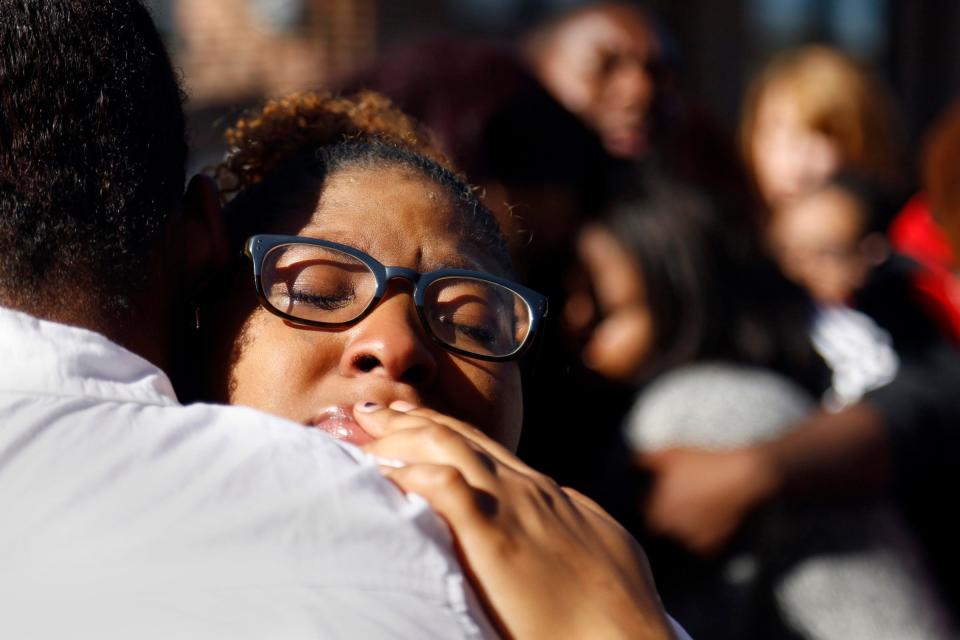At the scene of a fatal car crash, I saw Americans reveal their fundamental decency
Last week, I had a very ordinary experience. And that’s extraordinary.
I was driving down Interstate 81, returning from a family reunion in the mountains, when traffic slammed to a halt. There had been a very serious accident just in front of us.
My sister, who is great in a crisis, got out of the car and ran forward while I dug the trauma kit out of the back and followed. It turned out that a pickup had crossed the median and slammed head-on into a Kia sedan on our side of the highway.
The Kia driver was killed almost instantly, but the pickup driver remained alive, though pinned in and partially under his flipped-over truck. When I got there, someone else — an actual paramedic, not just someone like me who had taken a couple of advanced first aid classes — was already on the job, along with a pair of friends. A bunch of bystanders came together to lift the truck enough to get the driver out from under it, and then, as the highway patrol arrived, started at the officers' request to clear the larger bits of debris from the road. (There were a lot, as the aftermath of a head-on collision at that speed looks almost like an explosion: brake assemblies, exhaust manifolds, unidentifiable pieces of metal scattered everywhere.)
Awful accident, inspiring response
Lots of people jumped to help, and after the heavy pieces were gone, a couple of folks produced brooms from somewhere and began sweeping the road clear of glass. The road clearing, however, wasn’t to reopen things for traffic, but so that a medical helicopter could land right next to the wreck. It arrived and soon the injured pickup driver was being flown to a nearby hospital. (Alas, he didn’t make it.)
An immigrant's American story: My immigration and assimilation story is personal, but it's also universal
On the one hand, it’s not much of a story. Accidents like this are tragic for their victims and those victims’ families, but they barely make the local news.
But to me the most striking thing wasn’t the accident, which was awful. It was how well everyone else responded. When it happened, I was driving next to a group of motorcyclists from the Atlanta chapter of the Thunderguards, a black motorcycle club dating to the 1960s. They rushed forward to help immediately, as did, well, pretty much everyone else around. And more people kept drifting up to help from further away, bringing first aid kits, bottled water, blankets, or whatever they had that looked helpful.

When something needed to be done, people just pitched in. And even once there was nothing left to do but wait until the road opened, nobody was complaining or honking their horns. People shared water and Gatorade with those who needed it, offered umbrellas to provide some privacy for those who needed to relieve themselves by the side of the road, and generally acted nice. All this, in a group that was more genuinely diverse and multicultural — old people and young, of many races, people who drove Mercedes, or Kias, or Harleys — than even the most “woke” college could boast.
Despite polarization, decency lives on
People behave well in much worse circumstances than these. As sociologist Kathleen Tierney wrote about the response to the 9/11 attacks:
“Beginning when the first plane struck, as the disaster literature would predict, the initial response was dominated by prosocial and adaptive behavior. The rapid, orderly and effective evacuation of the immediate impact area — a response that was initiated and managed largely by evacuees themselves, with a virtual absence of panic — saved numerous lives. Assisted by emergency workers, occupants of the World Trade Center and people in the surrounding area helped one another to safety, even at great risk to themselves. In contrast with popular culture and media images that depict evacuations as involving highly competitive behavior, the evacuation process had much in common with those that occur in most major emergencies. Social bonds remained intact, and evacuees were supportive of one another even under extremely high-threat conditions.”
Preventing vehicle-ramming: I survived the Santa Monica Farmers Market crash. Car attacks can happen at any moment.
It happens everywhere. If you watch the dashcam video of the Florida International University bridge collapse last year, about 3 seconds elapse between the bridge falling and car doors opening with people running forward to help.
So I had a very ordinary experience, but one that seemed extraordinary in its own way. One of the things we’re constantly told is that basic decency is gone in America. But once you’re outside of the media/political bubble, most people seem to be awfully decent, and if anything, they seem to behave better when the going gets tough. That’s worth remembering as many media outlets keep telling us how awful we are and how much we hate each other.
Glenn Harlan Reynolds, a University of Tennessee law professor and the author of "The New School: How the Information Age Will Save American Education from Itself," is a member of USA TODAY's Board of Contributors.
You can read diverse opinions from our Board of Contributors and other writers on the Opinion front page, on Twitter @usatodayopinion and in our daily Opinion newsletter. To respond to a column, submit a comment to letters@usatoday.com.
This article originally appeared on USA TODAY: I saw American decency, not division, at scene of a fatal car crash

